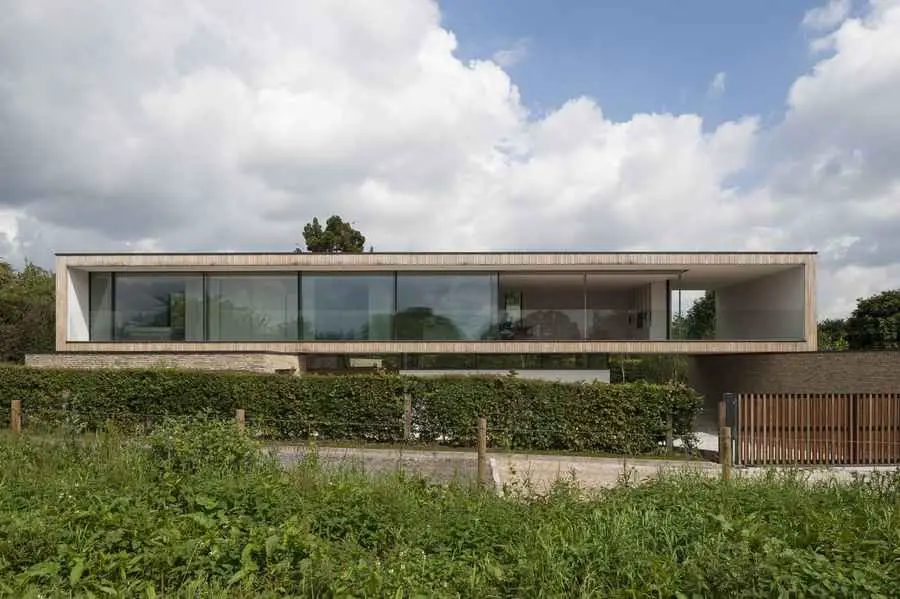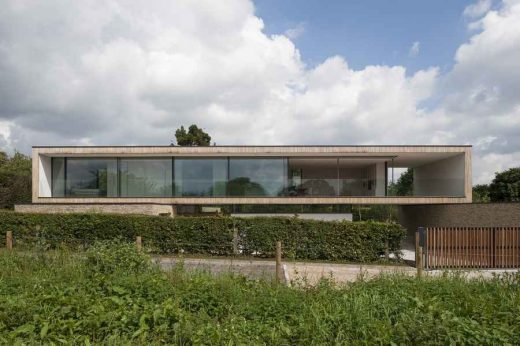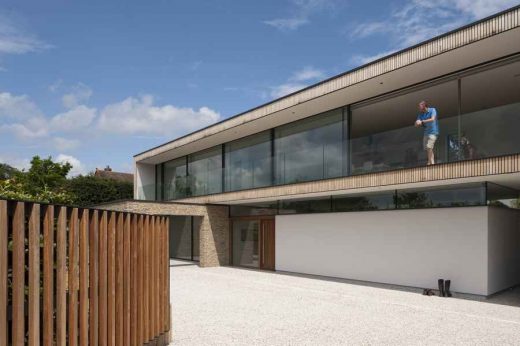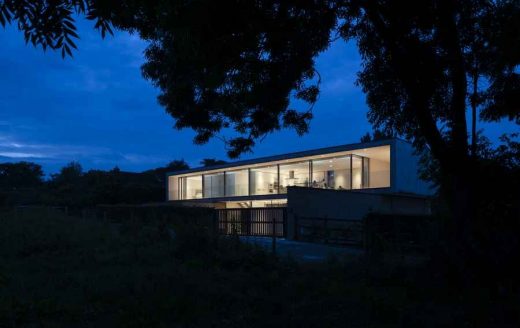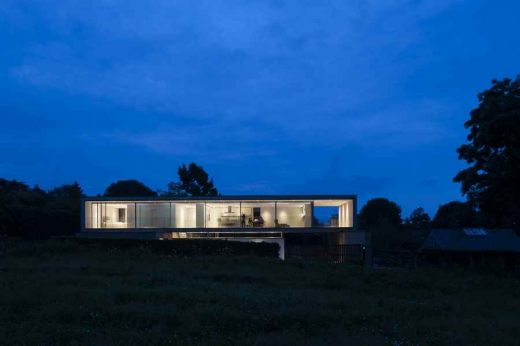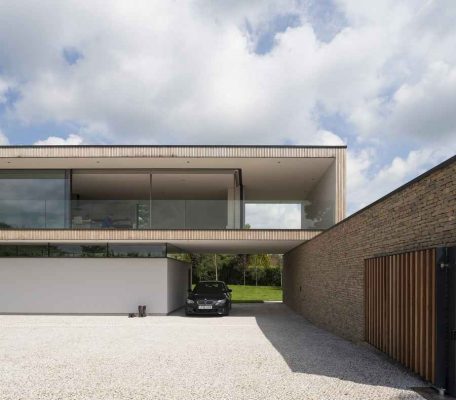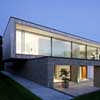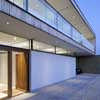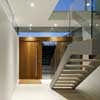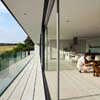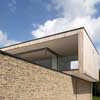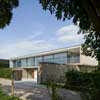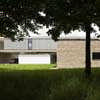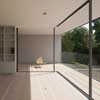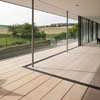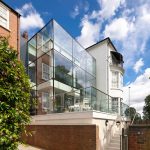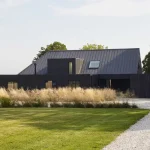Buckinghamshire House, Bourne End Property, Contemporary English Home, Building
Buckinghamshire Property: Hurst House
New Property n Bourne End design by John Pardey Architects with Ström Architects, UK
24 Aug 2012
Hurst House
Design: John Pardey Architects in collaboration with Ström Architects
Location: Bourne End, Bucks, south east England
Project Description
The Hurst House is a new build one-off contemporary house located on the edge of the village of Bourne End in Buckinghamshire.
The site forms part of a garden of a substantial house located on the edge of Bourne End in Buckinghamshire, directly fronting an area of open fields that form part of the Chilterns Area of Outstanding National Beauty (There are currently 33 AONB designations within England).
The clients’ brief was to build a very sustainable and contemporary family home that would have the flexibility to successfully cope with changing family conditions as their children grow up and leave the nest. This lead to a house where they can live in one extended space while family bedrooms can be shut down and left on tick-over.
A masonry rectangular volume on the ground floor, contains bedrooms, and is slightly sunken into the ground to reduce the height of the building towards the AONB. A lightweight steel and timber volume at the first floor is set perpendicular to the ground floor volume and contains living, kitchen and dining spaces, as well as the master bedroom suite.
It rests on top of the ground floor volume and spans across to a masonry wall that defines the southern edge of the house. A rectangular service element underneath the first floor sleeve – separated by a clere-storey – defines an entrance lobby with vertical circulation to one side as well as a carport to the other.
This arrangement of space allows for a self-contained bedroom wing for children (teenagers) that opens up to a south-facing courtyard, whilst the first floor volume allows living spaces and master bedroom to make the most of the site with its incredible views of the rolling landscape of the AONB to the west.
A linear balcony along the length of the first floor allows the facade to open up, and the recessed floor to ceiling glazed sliding panels to be shaded in the summer. At the southern end of the first floor volume the glazing is pulled back to create an outdoor living area which is open to both the east and the west allowing the sun to reach it at different times of day.
The environmental impact of the house was considered from the outset, and we were aiming to get very close to being a zero carbon home.
The building utilises very high levels of insulation. A small highly efficient gas boiler, together with heat recovery ventilation, rainwater recycling, solar water heating, a 10kW wood burner and a 9.9kWp photovoltaic installation, and low energy fittings throughout, ensure the property has an overall near zero CO2 impact rating. (We are yet to carry out the as built environmental performance calculations, to establish the exact CO2 impact of the property.) Since the building was connected to services, it has generated 25% more electricity than has been used.
We employed high quality natural materials that enhances and harmonises with the site; local Weston Underwood coursed stone to ground floor walls, and the upper floor element is clad in British Sweet Chestnut, which weathers to a natural silver colour and will last for many centuries without further maintenance. To the garden side, panels of pre-weathered zinc, set within the timber sleeve are employed. These materials will all weather naturally and blend harmoniously with the site and surroundings.
John Pardey Architects and Strom Architects worked in collaboration to see this building completed. When Magnus Strom left his job as a Director of JPA in 2010 to set up his own practice, John and Magnus decided that it would be beneficial for the project, if Magnus continued working with the detail and construction side of the project as well as overseeing it on site. This collaboration ensured a continuity of the project and has resulted in a strong design that has been detailed with great care and finished to an extraordinary quality.
Hurst House Buckinghamshire – Building Information
Project: Hurst House, Buckinghamshire, UK
Architect: John Pardey Architects in Collaboration with Ström Architects
Project Architect: Magnus Ström
Completed: Jun 2012
Collaborators:
Structural Engineering: Barton Engineers – www.bartonengineers.com
Lighting Design: DarkLight Design – www.darkligghtdesign.com
Photographers:
Andy Matthews – www.andymatthews.com
Andy Stagg – www.andystagg.com
Hurst House Buckinghamshire images / information from Designkommander
Location: Buckinghamshire, England, UK
Buckinghamshire Buildings
Buckinghamshire Buildings – Selection:
Design: Snell Associates

photo : Marcus Dawes
Garsington Opera Pavilion
Modern Buckinghamshire house:
High & Over, Amersham
1931
Amyas Connell
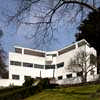
photo : Morley von Sternberg
High & Over
Stowe House – Restoration Phase 2, Buckinghamshire
Purcell Miller Tritton
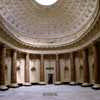
picture from architect
Buckinghamshire house
Buckinghamshire House
Designkommander

photo : Marcus Dawes
Buckinghamshire House
Set in a designated area of outstanding natural beauty, the stark inscrutability of a concrete monolith is interrupted by two vertical apertures. In contrast, the rear breaks down into floating blocks of rough-sawn timber, bush-hammered stone, and clear sheet-glass which diminish to the scale of the immediate landscape.
Comments / photos for the Hurst House – Buckinghamshire Property page welcome

